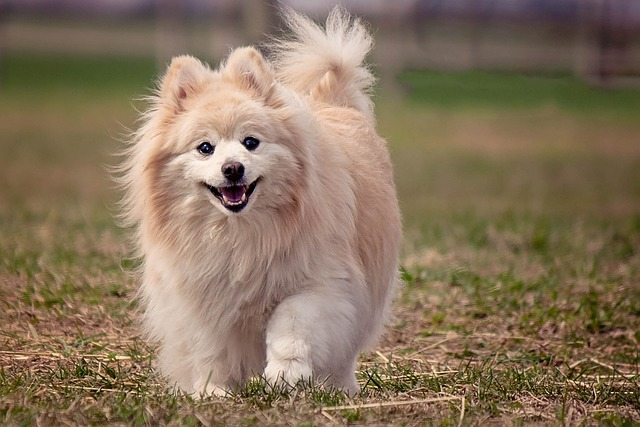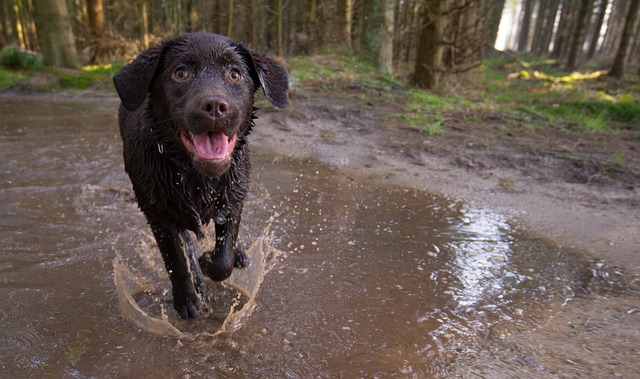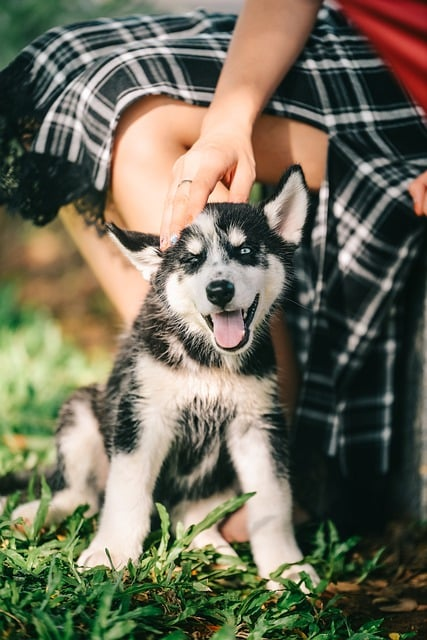Have you ever wondered how to potty train a puppy? Bringing a new puppy home can be exciting and fun, but it also comes with a new set of responsibilities. One of these responsibilities is potty training your puppy.
Potty training a puppy can be a daunting task, but with the right techniques and tips, you can have a fully house trained puppy.
In this blog post, we will provide you with helpful tips and tricks on how to potty train a puppy.
Establish a Routine
The first step in potty training your puppy is to establish a routine. You should take your puppy outside for a potty break as soon as they wake up, after they eat or drink, and after they have played.
Establishing a routine and a potty training schedule will help your puppy learn when it is time to go out and eliminate.
This routine will also help you keep track of when your puppy is due for a potty break. You also want to have a feeding schedule and don’t make changes to your dog’s diet, as both of these can affect how often your young dog has to go to the bathroom.
Use Positive Reinforcement
Positive reinforcement is a crucial tool in potty training your puppy. Whenever your puppy does something positive, you should immediately reward them with treats, praise, and pets.
The reward should be given immediately after they perform the desired behavior. As your puppy starts to associate the positive behavior with the reward, they will be more likely to repeat the behavior.
Use a Crate
Using a crate can be effective in helping your puppy learn to control their bladder and bowel movements. If your puppy is left alone in a crate, it will instinctively hold its bladder and bowel movements until they are let out.
This will help your puppy recognize that they should only eliminate when they are taken outside. It is also essential to make sure that the crate is large enough for your puppy to comfortably stand, turn around, and lie down in.
Benefits of Crate Training Your Puppy
Crate training is a great way to keep your furry friend both safe and happy. By creating a cozy den-like space for your pet, you can ensure that they have a space to call their own – a place where they can go to relax and decompress after a long day.
This can help to reduce stress and anxiety, particularly if your pet tends to get overwhelmed or anxious in busy or noisy environments. Crate training can also be crucial for potty training, as it helps to establish a regular routine and prevent accidents.
Additionally, traveling with your pet becomes much easier when they’re used to being in their crate, as it can provide a sense of security and familiarity in new environments.
All in all, you should crate train your pup because it is a simple but powerful way to make life better for both you and your furry friend.
Be Patient
Potty training a puppy is a process that takes time and patience. It is essential to remember that accidents will happen, and your puppy will not be fully potty trained overnight.
It is important to remain calm when accidents happen and not punish or scold your puppy. Punishing your puppy will only lead to fear and anxiety, which can make it harder to potty train them.
Maintain Consistency
Consistency is key when potty training your puppy. You should always take your puppy to the same spot in the yard every time you take them out. This will help your puppy learn that this is the designated area for eliminating.
You should also use the same command every time you take them outside, such as “go potty” or “do your business.” Consistency will help your puppy learn what is expected of them.
Consider Paper Training
Potty training your puppy can be a challenging task, but it is important for a clean and happy home.
A popular method of potty training for young dogs is paper training. By laying down newspaper or wee wee pads in a designated area, your pup can learn to associate that spot with going potty indoors.
However, it is important to consistently reinforce the use of puppy pads and gradually transition to outside potty breaks to successfully potty train using paper training.
Pottying indoors in a designated potty area on pee pads is the first step in the right track. But it can also cause bad habits and more occasional accidents once switching outdoors.

How Often Should You Take Your Dog Outside?
Proper care for your furry friend requires meeting their basic necessities, such as food, water, and exercise. Exercise is essential for dogs as it not only keeps them fit but also helps in releasing pent-up energy and stress during the day.
One of the most common questions among dog owners is, how often should they take their dog outside? Well, the answer to this question primarily depends on several factors such as the breed, age, size, and overall health condition of your dog.
Age of Your Dog
The age of your dog is the foremost factor when it comes to taking them outside. Young puppies, for instance, might need to go outside frequently as they have a small bladder and are still learning to control their bowel movements.
In contrast, adult dogs can stay longer without needing to go outside.
However, to maintain their physical and mental well-being, you should take them outside for at least three to four times a day.
Older dogs may require frequent potty breaks as they may have some health issues like incontinence or arthritis, making it difficult for them to hold it in for long durations.
Size of Your Dog
Just like their age, the size of your dog plays a significant role in how often they need to go outside. Small-sized dogs have smaller bladders and higher metabolism rates, which indicates that they might need to go outside more often than large dogs.
Therefore, if you own a small dog breed like Chihuahuas or Dachshunds, you might need to take them outside every two to three hours.
Breed Specific Needs
The breed of your dog is another crucial factor to consider when it comes to taking them outside. Some breeds are more energetic and require more exercise than others, while some only need moderate exercise.
For instance, breeds like Border Collies and German Shepherds are highly active and require extended walks or rigorous training sessions daily. Contrarily, breeds like Pugs, Basset Hounds, and Bulldogs are relatively laid-back and might be content with just a short walk.
Medical and Health Conditions:
Your dog’s overall health conditions and any medication they take may play a crucial part in how often they need to go outside. For instance, some medications may cause frequent thirst, which may lead to more potty breaks.
Also, if your dog suffers from a disease like Diabetes or Chronic Kidney Disease, they might need to go outside more frequently than healthy dogs.

When to Start Potty Training
Bringing home a new puppy can be a thrilling experience, but it also means taking on the responsibility of potty training. While there is no one-size-fits-all solution for every puppy, starting the potty training process at the right time can make all the difference.
Experts suggest waiting until your furry friend is at least 12 weeks old before you begin potty training. At this age, puppies have better bowel and bladder control and are more able to hold it in between potty breaks.
But remember, every dog is different and some may be ready sooner or later than others. Be patient and consistent with your training methods to ensure success. With a little patience and a lot of love, your new puppy will be potty trained in no time.
How Long Does House Training Take?
House training a dog can be a daunting task, especially for first-time pet owners. But don’t despair! With a little patience, consistency, and positive reinforcement, your furry friend can learn to do their business outside.
The time it takes to successfully house train a dog varies depending on several factors, including their breed, age, and personality. Some dogs may catch on quickly and be fully trained in a few weeks, while others may take several months.
It is important to remember that accidents will happen, and when they do, it’s essential to remain calm and refrain from punishing your pup. Consistency is key when house training your dog, and with a little persistence, you’ll have a perfectly trained pooch in no time.
When All Else Fails, Consider Professional Dog Training
Potty training can be a frustrating and time-consuming process for dog owners. If you’ve tried everything from treats to positive reinforcement and still haven’t had any success, it may be time to consider seeking professional help.
Professional dog trainers are experienced in dealing with all kinds of behavioral issues, including potty training. They can offer personalized solutions to help your furry friend understand where they should and should not go to the bathroom.
With the help of a professional trainer, you can finally put an end to those messy accidents and enjoy a cleaner, more stress-free home with your beloved pet. If you’re located in the DMV area, reach out to us at Ruff House Dog Training!

How To Potty Train A Puppy Answered
Potty training a puppy may seem overwhelming, but with patience and consistency, it can be an easily achievable task. Establishing a potty time routine, using positive reinforcement, using a crate, patience, and consistency are essential tips and tricks for successful potty training.
So, don’t give up on your furry friend, as they learn, celebrate every little win, and soon they’ll be fully potty trained.











